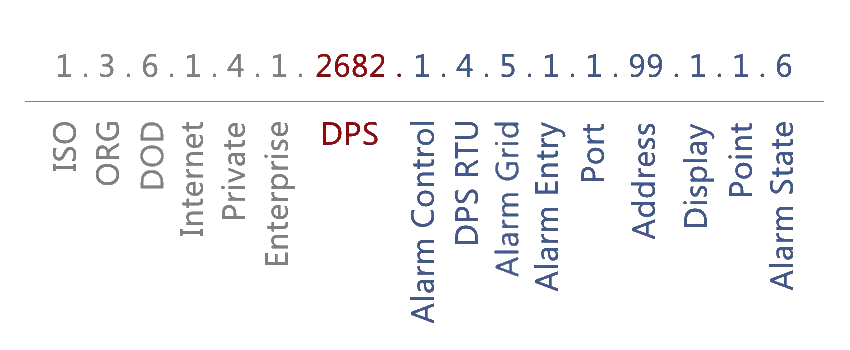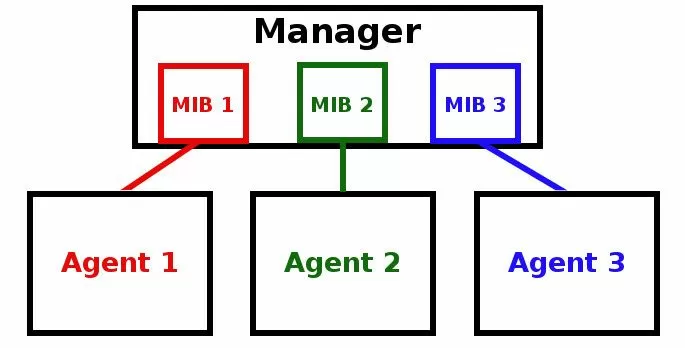Download our free SNMP White Paper. Featuring SNMP Expert Marshall DenHartog.
This guidebook has been created to give you the information you need to successfully implement SNMP-based alarm monitoring in your network.
1-800-693-0351
Have a specific question? Ask our team of expert engineers and get a specific answer!
Sign up for the next DPS Factory Training!

Whether you're new to our equipment or you've used it for years, DPS factory training is the best way to get more from your monitoring.
Reserve Your Seat TodayYou can think of an OID as an address used in SNMP messages to identify devices and their statuses - acting both as the "What is it?" as well as the "Where did it come from?" Want to know the temperature reading coming from a sensor at your mountaintop remote facility? There's an OID for that.
SNMP Object Identifiers (OIDs) point to network objects stored in a database called the Management Information Base, often referred to as the "MIB". A MIB holds the structure of the network alarms being monitored (like a map of the "city"), and it uses the OIDs to keep track of the individual components (like the address to a house or other location). In this example, an SNMP OID is like the address the fire truck would drive to if the fire alarm sounded. What if a fire broke out at your house, and you called the fire department with GPS coordinates (representing the Object ID or OID)? The fire department would have to look that up in its MIB to determine the correct street address. In telecom, SNMP OIDs describe specific locations in the network. The OID allows the MIB to translate the location of the event into a status description for your network technicians.
While it may look daunting, the OID follows a simple structure, with each "dot" segment identifying part of a network element. 
Now you know that you're dealing with the state of discrete alarm point #1 on an RTU manufactured by DPS Telecom. Not bad for a string of numbers, huh?
OIDs are defined in the SNMP MIB file, a kind of "codebook" for SNMP. The manufacturer (DPS Telecom in this example) spells out the second half of the OID for their own devices by supplying a MIB file to their users. The first half is established by a standard referenced "RFC" MIB used worldwide.
To monitor network alarms, you must know your alarm points. Your apartment or house address indicates a specific location by country, state, city, zip code, street, and house number. SNMP has Object Identifiers (OIDs) that define each thing for the manager and agents.
SNMP Object Identifiers (OIDs) point to network objects stored in a database called the Management Information Base, often referred to as the "MIB". A MIB holds the structure of the network alarms being monitored (like a map of the "city"), and it uses the OIDs to keep track of the individual components (like the address to a house or other location). In this example, an SNMP OID is like the address the fire truck would drive to if the fire alarm sounded. What if a fire broke out at your house, and you called the fire department with GPS coordinates (representing the Object ID or OID)? The fire department would have to look that up in its MIB to determine the correct street address.
In telecom, SNMP OIDs describe specific locations in the network. The OID allows the MIB to translate the location of the event into a status description for your network technicians.


This message is captured by the SNMP Manager which again uses the Management Information Base to tie the OID sensor message that was reported by the "driveway sensor" (a simple "No" response) back into the human readable 123 Main St. which is displayed.
If an object does not have an OID listed within an MIB, the SNMP Manager cannot identify it. Even if that object has a sensor and can transmit data, he SNMP Manager is blind without the MIB. For a condition or device to be monitored, it must have a corresponding MIB definition.
Here at DPS, we will occasionally have clients that require specific MIBs for their applications. One client, James, needed to be able to identify all of the printers on his LAN via SNMP by asking every device for its OID at user-defined time intervals. He needed to email any reporting events to the SNMP monitor, and he had to do that without busting his budget.
Another client had a need to send certain SET commands to remote units at some microwave sites. The units were not capable of sending those commands. Our solution had custom OIDs that were configured with variable bindings to accept SNMP Traps. This allowed monitoring and control of the remote microwave sites with the ability to toggle up to 40 discrete relays in the system. This solution saved them money and down time and increased the use of existing equipment for the customer.
Finally, remember that the first several pieces of each OID are almost always the same. These upper location levels are defined by a series of standard reference within the MIB. These series are called RFCs, or Requests for Comments. The RFCs that define SNMP OIDs are part of a larger group of RFC documents that define the Internet as a whole. Individual vendors create their own MIBs that only include the OIDs for their device.